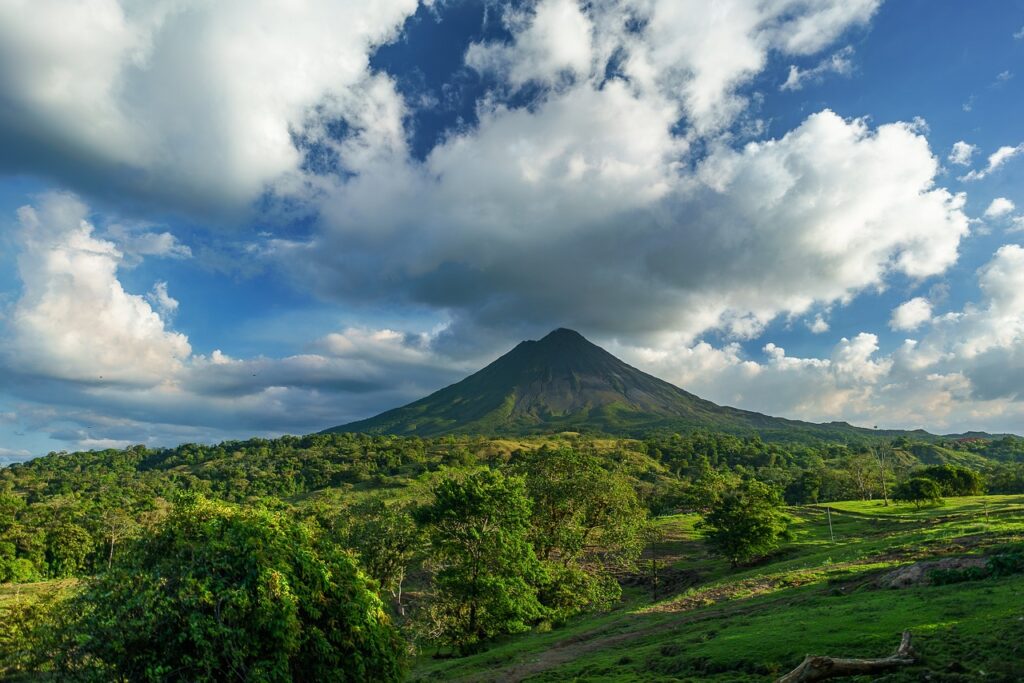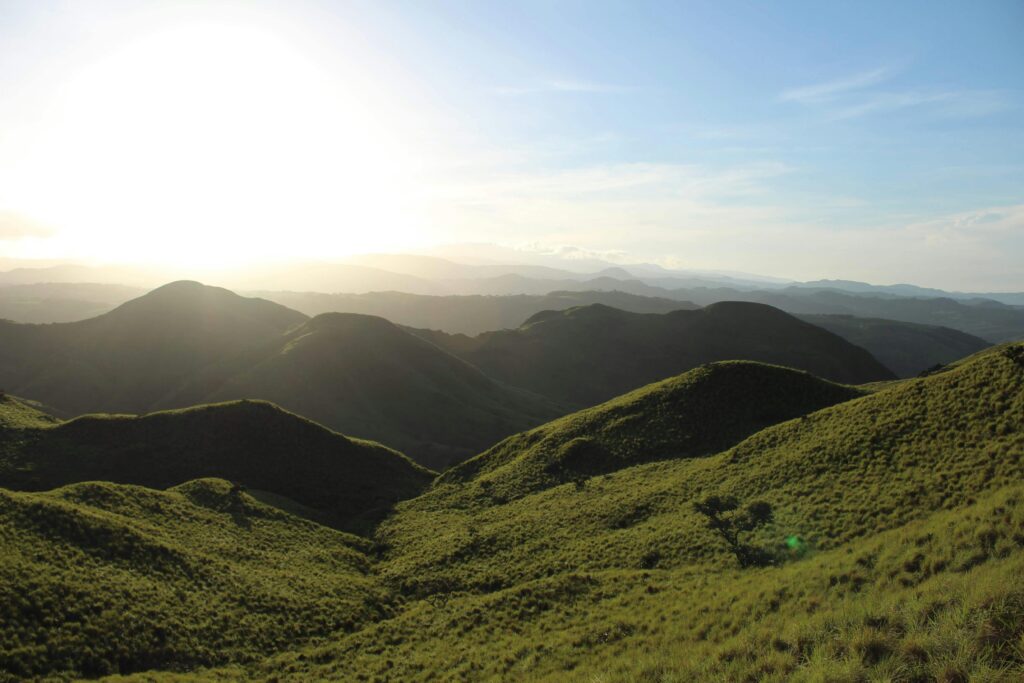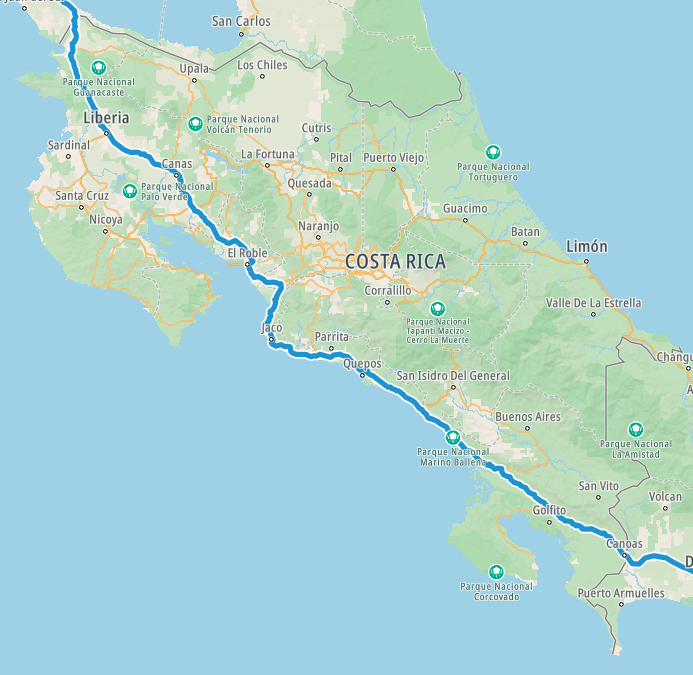Costa Rica / Republic of Costa Rica / República de Costa Rica – Let’s explore here

What’s it like in Costa Rica?
Costa Rica is a country in central America, about half the size of the Iceland. Throughout the centre lies the Cordillera de Talamanca mountains and hills. There are fourteen known volcanoes in Costa Rica, and six of them have been active in the last 75 years. The highest point is Cerro Chirripó, at 12,530 ft (3,819 m) above sea level.
Costa Rica’s population is around 5 million (2023) and its capital, San José is home to almost 2 million.

A. bit about they history of Costa Rica
Pre-Columbian Era
Before the arrival of Europeans, the region now known as Costa Rica was inhabited by various indigenous groups, including the Chorotega, Bribri, Cabécar and Huetar. These groups had their own distinct cultures, agriculture and social structures. They lived in scattered villages, relying on farming, hunting and fishing for sustenance.
Spanish Arrival and Colonial Rule
In 1502, Christopher Columbus made his first visit to Costa Rica, though it was not immediately colonised due to the region’s challenging geography. In 1561, Spanish conquistadors led by Juan de Cavallón began establishing settlements. Costa Rica was incorporated into the Captaincy General of Guatemala, a Spanish colonial administrative unit, and became part of the larger Spanish Empire in Central America. The colony was sparsely populated and economically underdeveloped compared to other Spanish territories in the Americas. The economy was based on agriculture, particularly crops like cacao and sugar, as well as cattle ranching.
Independence from Spain
Costa Rica, along with the rest of central America, gained independence from Spain on September 15, 1821, as part of the Central American Federation. However, the region experienced political instability, with divisions over whether to form a union or become independent states. Costa Rica opted for a relatively peaceful path compared to its neighbours.
The 19th Century and Political Development
Costa Rica’s early post independence years were marked by political struggles, but by the mid 19th century, it had established a more stable government. During this time, coffee production emerged as a major economic driver, and Costa Rica began to develop its own political identity. In 1856, Costa Rica fought off an attempted invasion by American adventurer William Walker, who had sought to take control of the region. In the late 19th century, Costa Rica began to modernise, with an emphasis on education, infrastructure and political stability. The country abolished its army in 1949, becoming one of the few nations in the world without a standing military.
20th Century and Modernisation
In the early 20th century, Costa Rica continued to grow as an agricultural exporter, with coffee, bananas and other products being major exports. The United Fruit Company, an American corporation, played a large role in the country’s banana industry. However, the country also experienced political upheaval, with struggles between conservative and liberal factions. In 1948, following a brief civil war, Costa Rica adopted a new constitution and established itself as a democratic republic. The civil war was prompted by disputes over elections, but the resolution led to significant reforms, including the establishment of social security and an emphasis on education.
Late 20th Century to Present
Costa Rica became known internationally for its political stability, strong education system, and commitment to environmental protection. It has developed into a leading ecotourism destination, leveraging its rich biodiversity and protected national parks. In the late 20th century and into the 21st century, Costa Rica maintained its reputation for political neutrality, economic growth and high standards of living. The country has consistently ranked high in global indices related to health, education and happiness. Today, Costa Rica continues to focus on environmental sustainability, renewable energy (with over 90% of its electricity coming from renewable sources), and peace building efforts. The country remains a stable democracy and an important player in the central American region.

Costa Rica road trip
Our Costa Rican road trip is part of a much larger North American road trip.
Map of our road trip through Costa Rica

Our planned Costa Rican road trip takes us from Nicaragua along much of the Pacific coast, before moving on to Panama.
No doubt we’ll explore the country much more than this continent-spanning short route shows, in particular checking out the capital and inland Costa Rica.
Hopefully our journey will improve our knowledge of this intriguing and beautiful country, and enable us to meet some interesting people. We’ll be updating this page at that time – don’t forget to check back 🙂
What’s it like to drive in Costa Rica?
They drive on the right hand side of the road in Costa Rica. Main roads are quite good condition, however many minor roads are dirt tracks and in poor condition. Driving standards are poor.
Private cars are only allowed to enter the capital of San José on certain weekdays, allocated using the last digit of the licence plate number.
Border authorities may refuse entry to right-hand drive vehicles as they’re illegal and do not qualify for local insurance.
We’ve also created a dedicated page to driving abroad, which you might find helpful 🙂
What currency do they use in Costa Rica?
In Costa Rica they use the Colon. Cash is widely used. The use of credit / debit cards is widely accepted in cities, although not in rural areas. Travellers cheques are not generally accepted. There are many ATMs in cities, although not all accept foreign issued cards.
You should make yourself aware of the amount that your bank charges you for using credit and debit cards abroad. Often credit cards are cheaper for purchasing items directly, and for withdrawing cash from ATMs.
What language do they speak in Costa Rica?
They speak Spanish in Costa Rica. English is also spoken in major cities.
What time zone is Costa Rica in?
Remember, when you’re planning your next trip to take a look at what time zone it’s in.
Do I need a visa to visit Costa Rica?
We’ve created a dedicated, more comprehensive page on visas, which you should find helpful. Check it out!
Is wild camping legal in Costa Rica?
Yes, wild camping is fine in Costa Rica, although make sure the land is not private.
What plug / socket type do they use in Costa Rica?
In Costa Rica they use plug / socket types A and B.


Health issues in Costa Rica
Is it safe to drink water in Costa Rica?
Yes, it is safe to drink tap water in Costa Rica. Bottled water is also readily available across the country.
What vaccinations are required for Costa Rica?
This NHS website is kept up to date with all relevant information on vaccinations in Costa Rica.
Phones in Costa Rica
What is the country calling code for Costa Rica?
The country calling code for Costa Rica is +506
What are the emergency phone numbers in Costa Rica?
- The emergency number for police in Costa Rica is: 911
- In Costa Rica, the emergency number for ambulance is: 911
- The emergency number for fire in Costa Rica is: 911
If you’ve got some useful info that you’d like to share, let us know!
And don’t forget to check out all the other pictures!
